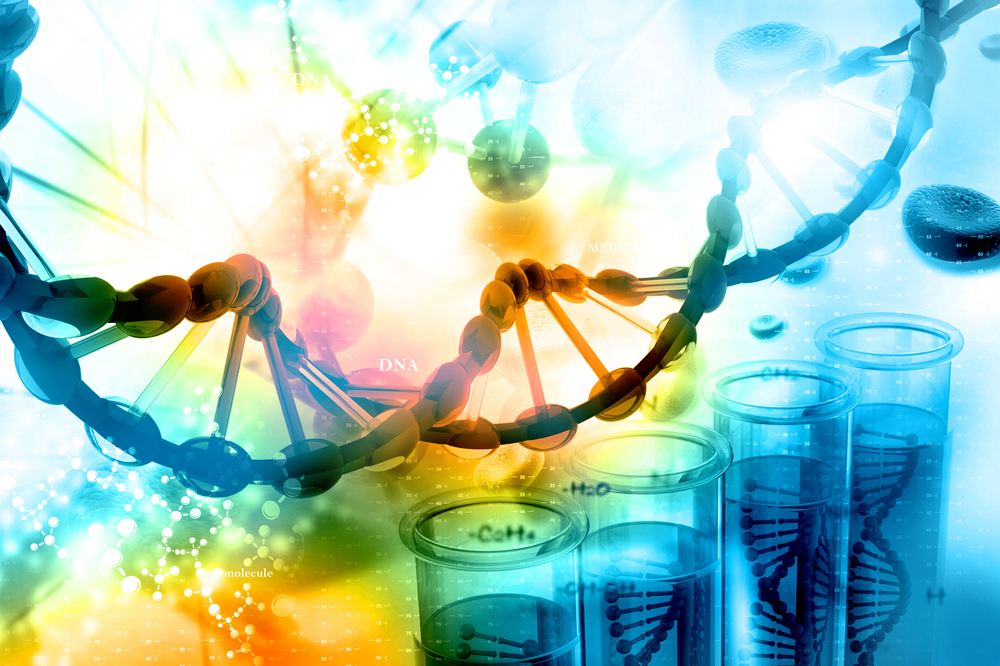Researchers Develop Blood Test to Screen Newborns for SMA and Identify Carriers

Researchers have developed a rapid, specific blood test to screen newborns for spinal muscular atrophy (SMA) and identify carriers — those who do not have the disease but can pass it on to their children.
The study, “Multiplex Droplet Digital PCR Method Applicable to Newborn Screening, Carrier Status, and Assessment of Spinal Muscular Atrophy,” was published in the journal Clinical Chemistry.
SMA is mainly caused by the complete loss of exon 7 in the SMN1 gene, which leads to a reduction in levels of the SMN protein. Exons are the sections of a gene that contain the information to generate proteins.
The existence of a second SMN gene, SMN2, can partially compensate for the loss of SMN1-produced SMN. Usually, the more SMN2 gene copies a person has, the less severe the disease.
SMA is inherited in an autosomal recessive manner, meaning a child must acquire two defective copies of the SMN1 gene — one from the father and one from the mother — to develop the disease.
Each person has 46 chromosomes — rodlike structures where genes are located — arranged in 23 pairs, where one chromosome is inherited from the mother and the other from the father.
Interested in SMA research? Check out our forums and join the conversation!
While people with only one mutated SMN1 copy do not develop the disease, they can still transmit the mutated gene to their children and are called carriers. Because SMA is one of the most lethal genetic disorders, with a carrier frequency of 1 in 40 to 1 in 100 people, identifying carriers is essential for genetic counseling of adults who are planning families.
Identification relies on an accurate determination of the number of SMN1 exon 7 copies, with people with only one copy considered carriers (called 1/0 carriers). However, some carriers lack SMN1 exon 7 in one of their chromosomes. Instead, they have two copies of SMN1 exon 7 in another chromosome (2/0 carriers) — and may be wrongly identified as non-carriers.
To identify 2/0 carriers, researchers can search for the presence of specific mutations associated with the presence of two SMN1 copies in one chromosome, including the g.27134T>G (c.*3+80T>G) mutation.
The recent addition of SMA to the Recommended Uniform Screening Panel for newborns in the U.S. has increased the use of newborn SMA screening. However, there are no standardized methods for newborn screening, and an ideal method should be able to distinguish affected newborns from SMA carriers, plus measure SMN2 copy number to predict SMA type and disease severity.
Mayo Clinic researchers have developed a rapid, effective blood test to screen newborns for SMA and identify SMA carriers. It works with a single dry blood spot (DBS), whole blood, or cultured cells.
Dried blood spots consist of the placement of a blood drop on a filter card after a finger prick with a lancet. It is an easy way of collecting, shipping and storing blood samples.
The test can simultaneously detect the number of SMN1 exon 7 and SMN2 copies, using a method called droplet digital PCR (ddPCR).
In ddPCR, a single blood sample is divided into 20,000 droplets, and detection of the DNA sequences of interest occurs in each, increasing the statistical power of the detection while reducing costs.
The team analyzed dry blood spots from a total of 1,542 people — 1,388 infants under seven days of age, 142 people older than seven days, and 12 confirmed SMA patients.
The new test detected no SMN1 exon 7 copies and either two or three copies of SMN2 in all SMA patients, validating its clinical use to detect SMA in newborns.
Thirteen people had 1 copy of SMN1 exon 7 and were considered carriers. Since not all SMA-causing mutations are related to exon 7 deletion, the researchers also developed a method to detect other types of SMN1 mutations in dried blood spots, called SMN1 Sanger sequencing. The method accurately detected distinct SMA-causing mutations in two people who showed symptoms associated with SMA.
The researchers noted that one person had five SMN1 copies — suggesting a SMN1 3/2 status — which revealed the potential existence of SMA 3/0 carriers among people with three copies of SMN1.
To improve SMA carrier testing and include the identification of SMA 2/0 carriers, the team also used the same method to detect the presence of g.27134T>G (c.*3+80T>G) mutation. The test successfully identified two SMA 2/0 carriers among 125 people tested.
“With the ddPCR and Sanger sequencing methods described, we established a rapid and accurate approach to detect SMA and to increase sensitivity for SMA carrier status from a single DNA sample,” researchers said.







